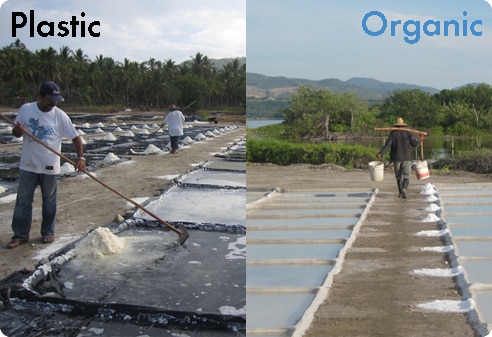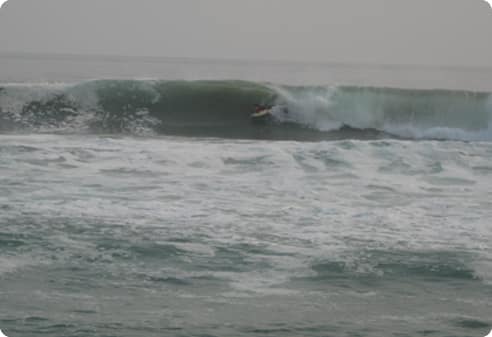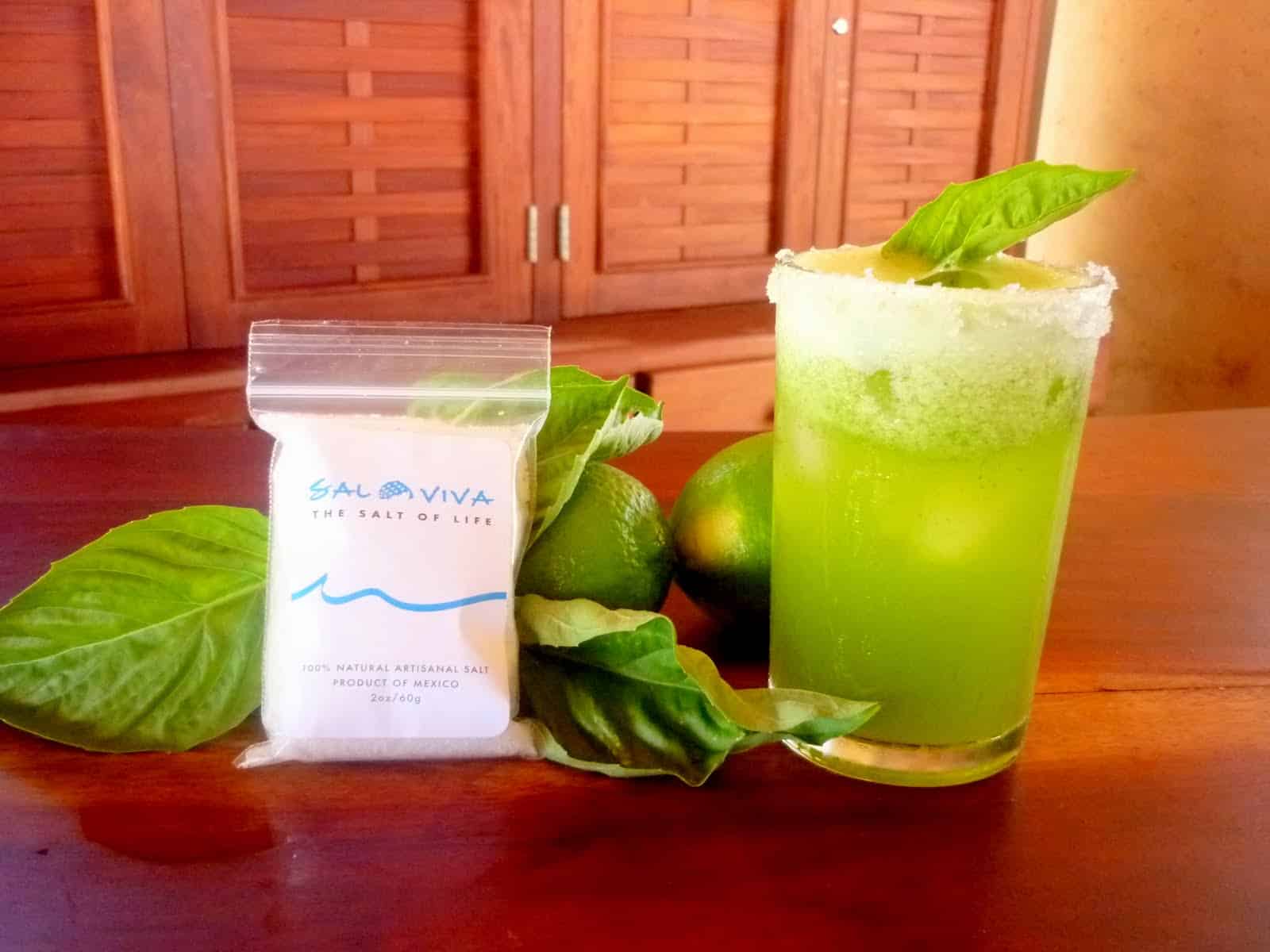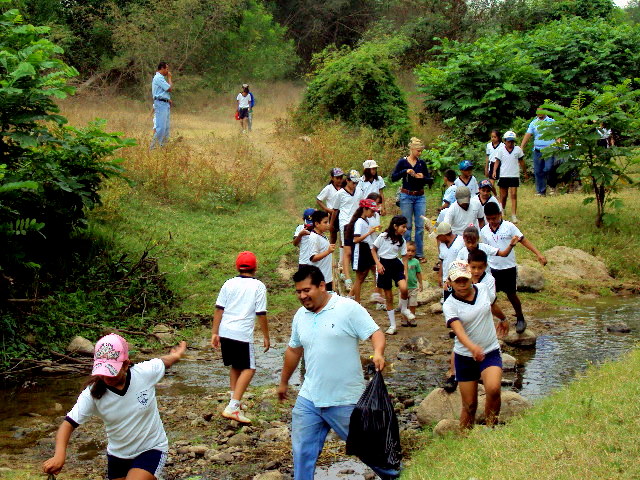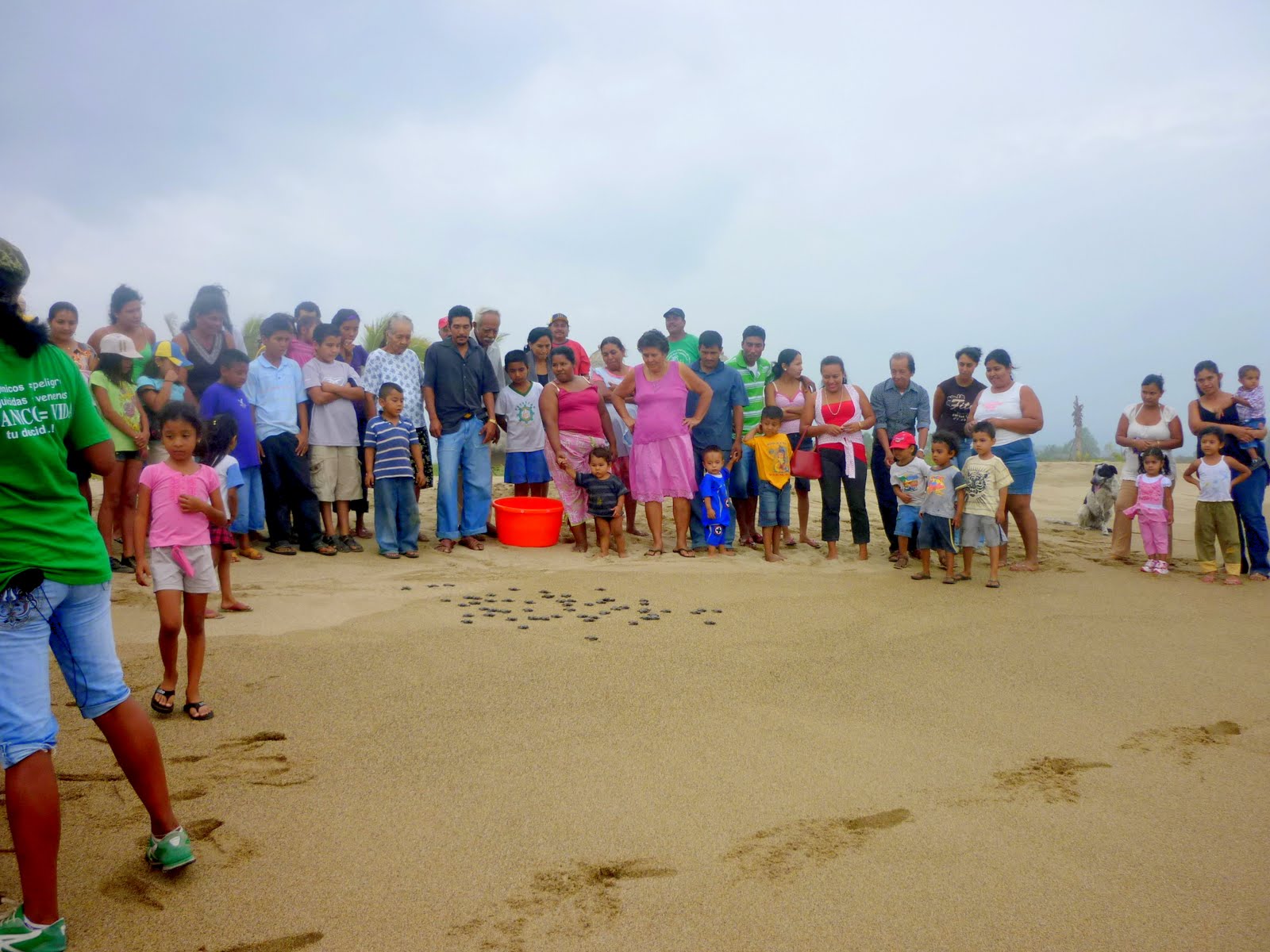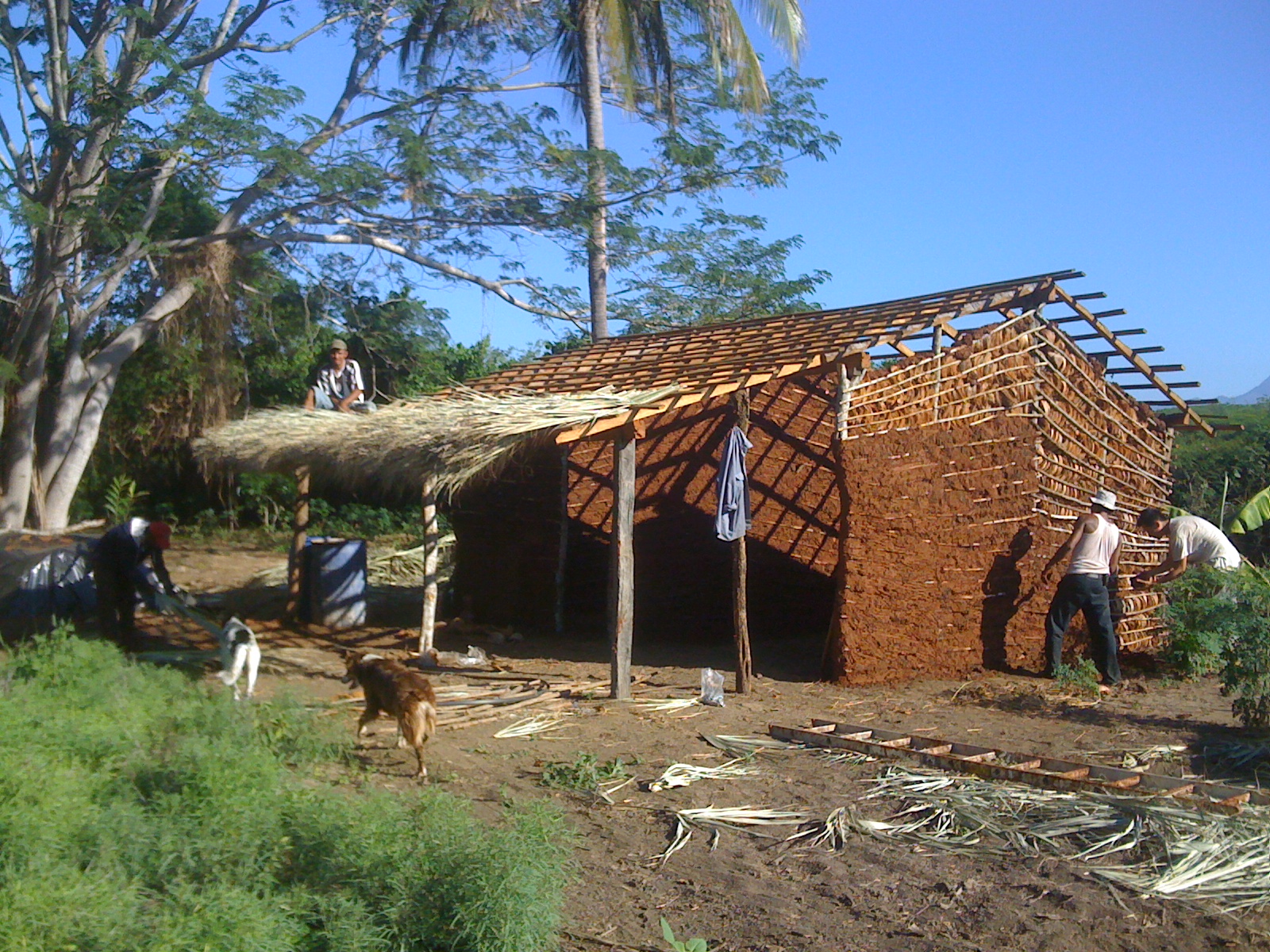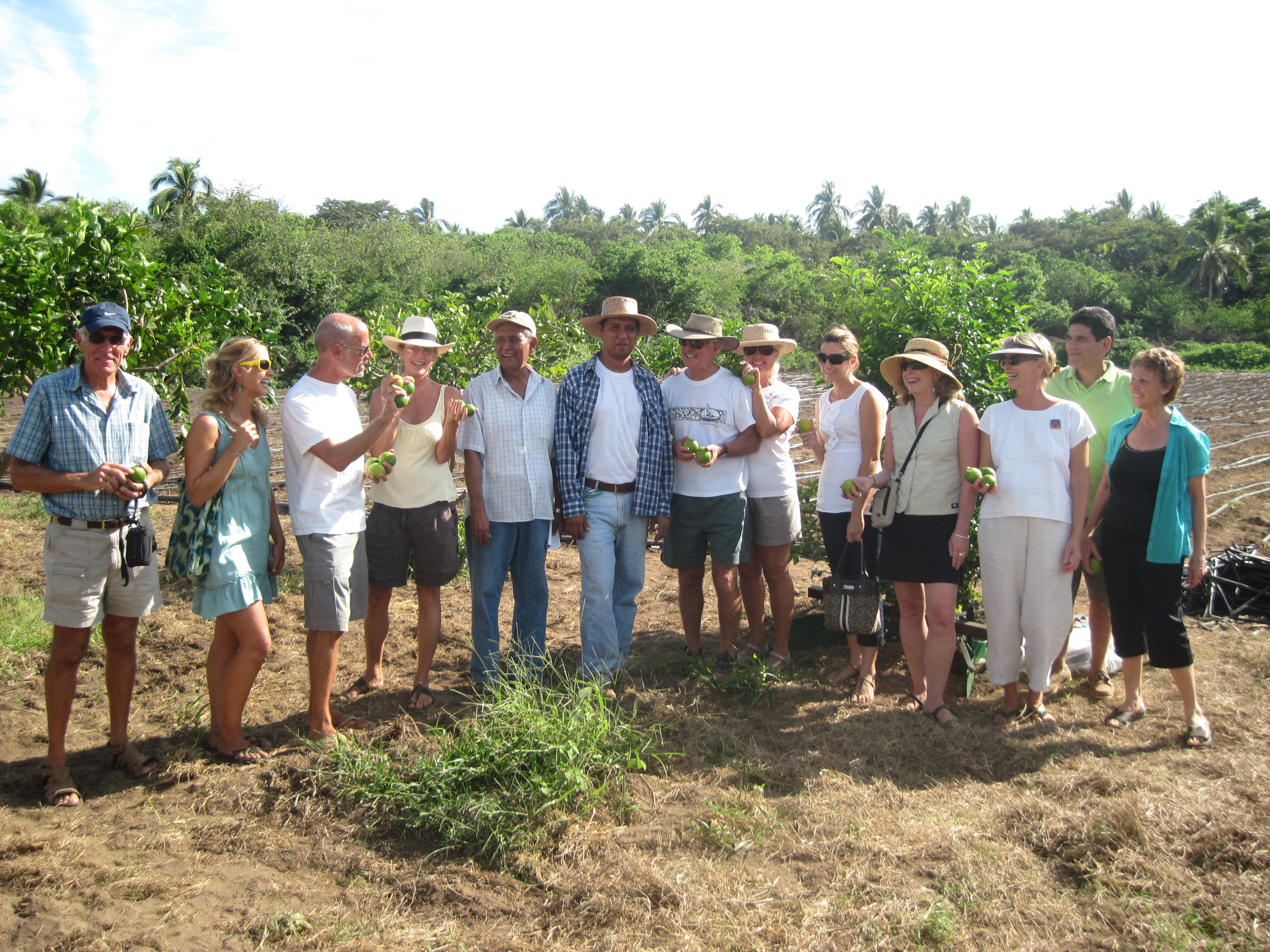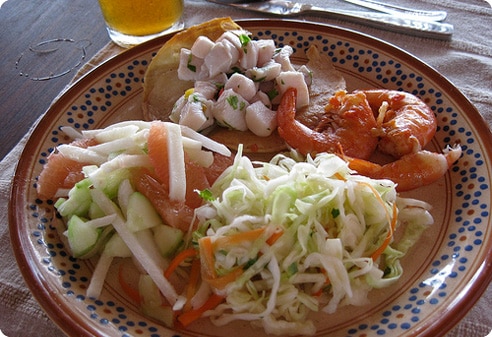 Over the past few weeks Playa Viva’s common area has been more colorful than normal while guest artist Kim Howard unpacked her paints and sketch book with the ultimate goal of creating a mural-size map depicting the landscape of Playa Viva. The map is 8 feet by 8 feet and shows the trail system within the property highlighting areas of interest with her fun and colorful paintings of lagoon wildlife, ancient medicine stone, flowers, turtles, whales and other wonderful details. Guests are now gathering in front of the map, planning hikes, discussing local ecology and gaining a better sense of place. This is the first part of our larger “field guide” project to make the trail system throughout the 200 acres (86 hectares) of Playa Viva more accessible to visitors.
Over the past few weeks Playa Viva’s common area has been more colorful than normal while guest artist Kim Howard unpacked her paints and sketch book with the ultimate goal of creating a mural-size map depicting the landscape of Playa Viva. The map is 8 feet by 8 feet and shows the trail system within the property highlighting areas of interest with her fun and colorful paintings of lagoon wildlife, ancient medicine stone, flowers, turtles, whales and other wonderful details. Guests are now gathering in front of the map, planning hikes, discussing local ecology and gaining a better sense of place. This is the first part of our larger “field guide” project to make the trail system throughout the 200 acres (86 hectares) of Playa Viva more accessible to visitors.
Kim, and her 14 year old daughter Amelia, brought color to Playa Viva not only in the form of paints and pictures (they are both wonderful artists and we’re still finding sketches in drawers and on shelves), but also in their lively personalities. Kim engaged guests and staff in the creation of the map, making it feel like a collaborative effort, and also inspired many to pick up a paint brush and become part of the project. Kim and Amelia have left a lasting impression on Playa Viva and will be missed! We look forward to their return.
We had a chance to interview Kim upon her departure:
PV: How has staying at PV for two weeks effected you and your daughter?
Kim: We were able to unpeel our onion layers, to get down to the essence of ourselves that is stress-free, light and curious and joyful and so, so happy. We learned to eat food that I have never tasted: freshly caught fish from our beach, cactus, small succulents [verdolagas or purslane and pipisas] that are full of vitamins and grow wild at Playa Viva. I loved being a part of a larger picture, and two weeks is just barely enough time to feel it. I highly recommend a two week visit. Teenagers are not bored. They love the exchange with staff, learning a new language, listening to Mexican new music, learning to salsa, yoga, to draw and to sit still and listen to birds and ocean waves. I felt greedy with the time. Because the guests were so interesting, I wanted to know their stories. We, all the guests, have a common ground when staying in an eco-lodge, and yet there was time enough to walk the beach alone, for solitude in the room to read or think or do nothing.
PV: What made this place special for you?
Kim: All the above. But the truly special part was the staff, was the generosity of the staff handing me a “basil-water” or “cerveza” and snacks, before I even thought of it. They watch to see what they can do to make you happy at all times. The respect of the guests and staff for the environment and for curiosity of learning new ways of living was special. No toilet paper in toilets, turning off the electrical lights to gather more solar power, “to clean up our own garbage” and feel responsible for picking up whatever else we found on the beach was important. I felt a responsibility to Playa Viva, and in turn to my life back home.
PV: What did you observe about how the other guests felt while here?
Kim: I believe everyone goes through the de-toxing, de-stressing, simply from packing and leaving homes, pets and jobs behind. We all wanted to know each other, wanted to ask questions and grow familiar and help with younger children, and talk with teenagers about their bright notions, and talk about books, thoughts, parenting, culture and cultural immersion, biology etc. We all loved chef Alejandro’s cooking. We appreciated the staff’s utter openness and help with Spanish/English translation, with folklore, marketplace finds, learning about the people of local villages and their families. All guests were curious and open like children. The experience opened us up.
